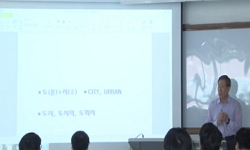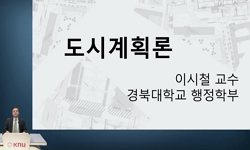The first objective of this study is to analyze temporal changes of landscape structures including land uses, land cover types, and landscape patterns for Chuncheon to explore potential impacts on ecological landscape functions. The second objective i...
http://chineseinput.net/에서 pinyin(병음)방식으로 중국어를 변환할 수 있습니다.
변환된 중국어를 복사하여 사용하시면 됩니다.
- 中文 을 입력하시려면 zhongwen을 입력하시고 space를누르시면됩니다.
- 北京 을 입력하시려면 beijing을 입력하시고 space를 누르시면 됩니다.
춘천시 도시경관의 구조적 변천과 바람직한 경관계획 전략 = Structural Changes and Desirable Planning Strategies of Chuncheon's Urban Landscape
한글로보기https://www.riss.kr/link?id=A35497287
-
저자
조현길 (강원대학교 산림경영 · 조경학부)
- 발행기관
- 학술지명
- 권호사항
-
발행연도
2005
-
작성언어
Korean
-
주제어
토지이용 ; 토지피복 ; 경관패턴 ; 시각적 질 ; land use ; land cover ; landscape pattern ; visual quality
-
KDC
622
-
자료형태
학술저널
-
수록면
151-164(14쪽)
- 제공처
-
0
상세조회 -
0
다운로드
부가정보
다국어 초록 (Multilingual Abstract)
Thus, rash urban sprawls and highly dense developments caused reduction of greenspace area both in the suburbs and in the urban core, although urban greenspace is a major agent in maintaining sound ecological functions. The city requires a systematic master plan to determine rational limits for the size and capacity of each land uses. The city also should improve the urban landscape to create the identity as a green city and the amenity of living environments, including not merely spatial organization and skylines but street, residential, stream, and park/greenspace landscapes.
The first objective of this study is to analyze temporal changes of landscape structures including land uses, land cover types, and landscape patterns for Chuncheon to explore potential impacts on ecological landscape functions. The second objective is to analyze visual problems by landscape type on a micro-scale and to suggest desirable planning strategies of the urban landscape. Developed lands were increased by 2 times for about one generation from 1974 to 1999, while forest and agricultural lands were decreased by 23% and 40%, respectively. Hard surfaces in developed lands were increased by 31% for the time period.
Thus, rash urban sprawls and highly dense developments caused reduction of greenspace area both in the suburbs and in the urban core, although urban greenspace is a major agent in maintaining sound ecological functions. The city requires a systematic master plan to determine rational limits for the size and capacity of each land uses. The city also should improve the urban landscape to create the identity as a green city and the amenity of living environments, including not merely spatial organization and skylines but street, residential, stream, and park/greenspace landscapes.
동일학술지(권/호) 다른 논문
-
- 강원대학교 조형예술연구소
- 김진봉
- 2005
-
- 강원대학교 조형예술연구소
- 한재오
- 2005
-
- 강원대학교 조형예술연구소
- 이석권
- 2005
-
색채 심리가 노인 생활 건강에 미치는 영향에 관한 연구
- 강원대학교 조형예술연구소
- 권일현
- 2005




 RISS
RISS





